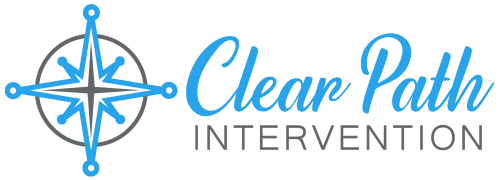by Clear Path Intervention
Share
by Clear Path Intervention
Share

In recent months, first responders across the country have faced a terrifying new challenge: opioid overdoses that don’t respond to naloxone, the lifesaving drug traditionally used to reverse opioid effects. Reports are emerging from cities like Chicago and Philadelphia that a veterinary sedative called medetomidine is increasingly being found mixed with fentanyl and other opioids. This dangerous cocktail is turning overdoses into complex medical emergencies, with symptoms that naloxone alone can’t fully reverse.
A startling study reported that 72% of opioid samples in Philadelphia contained medetomidine, and Chicago emergency responders have documented over 160 suspected overdoses involving this drug, many resistant to naloxone treatment (DrugFree.org, AP News). This unsettling trend is a new and deadly twist in the ongoing opioid crisis, leaving families feeling helpless and desperate for answers.
Understanding Medetomidine: The New Threat in the Opioid Crisis
Medetomidine is not a household name, and that’s partly why it’s so dangerous. Originally developed for use as a sedative and pain reliever in veterinary medicine, it’s not approved for human use. However, illicit drug manufacturers have been increasingly adding medetomidine to fentanyl and heroin to enhance the sedative effects and boost “product potency.” The problem is that medetomidine works very differently from opioids, causing deep sedation, low heart rates (bradycardia), and respiratory depression that doesn’t respond to naloxone, the opioid overdose antidote.
To make matters worse, most people using street opioids have no idea medetomidine is lurking in the supply. When overdose happens, paramedics give naloxone, expecting it to restore breathing and consciousness. But in cases involving medetomidine, naloxone only reverses the opioid portion of the overdose. The sedative effects remain, often leaving victims unresponsive and at risk of death unless advanced medical care is immediately available.
Medetomidine’s rise mirrors the earlier spread of xylazine, another veterinary sedative known as “tranq” on the streets. But experts warn medetomidine might be even more dangerous because it has a stronger impact on the heart and breathing. The CDC has identified its presence in 18 states plus Washington, DC, but the true scope is likely larger due to limited testing resources.
This trend is forcing public health officials, harm reduction groups, and treatment providers to rethink overdose prevention strategies. Naloxone alone may not be enough. Instead, families and communities need broader awareness and tools to navigate this evolving, deadly landscape.
Families on the Frontlines
Imagine the pain of a mother who finds her adult son unresponsive on the living room floor. She calls 911, desperately explaining that he uses opioids. Paramedics arrive with naloxone, administer it, but he doesn’t wake up fully. He’s breathing shallowly, heart rate dangerously low. They rush him to the hospital, only to learn his overdose involved medetomidine mixed in with fentanyl.
Stories like these are becoming all too common. Families feel the shock of realizing that the “safe” emergency fix, naloxone, might not be enough anymore. They face feelings of helplessness, fear, and confusion about what else they can do to protect their loved ones.
Samantha, a fictional composite based on many real families, shares this common experience:
“We had no clue what medetomidine was until after my brother almost died. We thought we knew the risks of opioids, but this was something new, something scarier. It felt like the ground shifted beneath us. We needed help, guidance and fast.”
The emotional toll isn’t just about medical emergencies. Addiction itself is a complex family disease that touches every relationship. In an environment where drugs are becoming increasingly toxic and unpredictable, early intervention, reaching out for help before tragedy strikes, has never been more urgent.
Who Is Clear Path Intervention?
Since 2018, Clear Path Intervention has been walking alongside families across all 50 states, helping them navigate the heartache and confusion of addiction. Their mission is simple but profound: to guide families through addiction with love, respect, and a tailored plan for each unique situation.
Brad Garraway, the founder of Clear Path Intervention, explains their approach:
“We’re not here to shame or blame. Addiction is complicated, and every family’s story is different. Our job is to meet families where they are to listen, to understand, and to create a path forward that works for them.”
Clear Path’s team understands the unique challenges families face when drugs become more unpredictable. They know that the rise of medetomidine and other adulterants in the drug supply changes the stakes making quick, informed, and compassionate action all the more vital.
The Clear Path Approach: How Interventions Work Today
Clear Path doesn’t believe in a one-size-fits-all solution. Their interventions are personalized and rooted in deep respect for both the individual struggling with addiction and their family.
Here’s how Clear Path typically works with families:
-
Comprehensive Assessment
They start by understanding the family dynamics, history, and the person’s addiction journey. This includes discussing fears, barriers, and goals with everyone involved. -
Education on Addiction and New Risks
Given the evolving drug supply, Clear Path ensures families know about medetomidine and other emerging threats. They explain why naloxone might not always work and how to recognize overdose signs that require urgent medical care. -
Personalized Intervention Planning
Clear Path designs an intervention tailored to the family’s values, readiness, and the loved one’s circumstances. They prepare everyone emotionally and practically, anticipating resistance or fear. -
Facilitation and Support
The intervention is facilitated by licensed professionals who guide the conversation with compassion and firmness. Clear Path helps the individual understand the impact of addiction and the options for treatment. -
Treatment Coordination
They connect families with trusted treatment centers equipped to handle complex opioid addictions, especially cases complicated by substances like medetomidine. -
Ongoing Coaching and Aftercare
Intervention is just the beginning. Clear Path supports families through treatment entry and beyond, coaching them on communication, boundary setting, and relapse prevention.
Proven Results and Lasting Impact
Clear Path’s commitment to relationship-building and education leads to strong outcomes. According to their 2024 data, over 75% of families they assist see their loved ones enter treatment successfully, with many sustaining recovery for years after.
Brad Garraway shares a recent success story:
“One family was overwhelmed, feeling hopeless after multiple overdoses, some involving medetomidine. After our intervention, they found a treatment program prepared for these challenges. Today, their loved one has been sober for 18 months. It’s moments like these that remind us why this work matters.”
Why Families Need to Act Now
The presence of medetomidine in the drug supply is expanding rapidly. Waiting for the “right time” to intervene can mean risking a fatal overdose. Families must stay informed and ready to act at the first signs of trouble.
Education is a powerful tool. Recognizing that naloxone might only be part of the solution helps families prepare for emergencies more effectively, like calling 911 immediately and knowing other medical options may be needed.
Intervention before things spiral can reduce suffering not only for the individual but for the entire family system. The sooner families seek help, the more options they have including programs that understand how to treat addictions complicated by veterinary sedatives.
Finding Hope Amid the Crisis
While the opioid crisis has entered a new, more dangerous phase, hope remains alive. Clear Path Intervention offers free consultations and virtual support groups, ensuring families don’t face these challenges in isolation.
Community, care, and courage can still light the way forward. By reaching out early, families can rebuild connection and find healing together.
As Brad Garraway puts it:
“You don’t have to walk this road alone. We’re here to help guide your family through the storm, no matter how dark it feels.”
Conclusion
The rise of medetomidine in fentanyl is a sobering reminder that the opioid crisis is far from over and that the tools and strategies must evolve. When naloxone isn’t enough, families need knowledge, support, and professional guidance.
Clear Path Intervention embodies that support. Through compassion-driven, tailored interventions, they give families a way forward when the drug landscape feels more dangerous and confusing than ever.
If you’re facing addiction in your family, especially in this new age of adulterated opioids, don’t wait. Reach out. Because even when the drugs change, hope and a clear path still remain.
For more information, or to connect with Clear Path Intervention’s free support services, visit clearpathintervention.com.
HELP IS AVAILABLE
Do You Have a Loved One Struggling with Addiction or Mental Health Issues?
Uncover the crucial link between addiction and mental health. This guide offers key insights and effective strategies for addiction recovery and healing.
Here’s a topic that is very relevant to the holiday season, a time that comes with built-in stress and plenty of exposure to close family members. When a close family member is addicted to drugs or alcohol, their addiction takes a toll on you and your family. It is a slow process of utter devastation […]
During the global COVID-19 pandemic, there has been a significant increase in alcohol use disorder-related deaths among all age groups and sexes. Actual mortality rates related to alcohol have been far higher than “normal statistical levels” for both 2020 and 2021. In 2020, observed death rates tied to alcohol were 25% higher than expected, and […]





